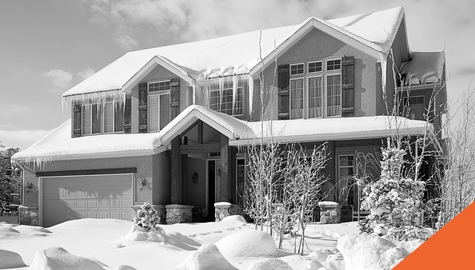11 Safe Driving Tips
Monday, 2 March 2020
Make no mistake, when you’re behind the wheel of a 2-ton vehicle, you have a lot of power. And with great power comes great responsibility. Driving is a privilege and should always be treated as such. Whether you’ve just graduated from driver’s ed, or you’re a seasoned driver, we can all improve our skills on the road! Protect yourself and those around you on the road with these safe driving tips.
1. WEAR YOUR SEATBELT
First of all, it’s the law. Secondly, it can protect you from serious injury in an accident or emergency. A good driver also knows it’s his/her responsibility to ensure passengers are also wearing their seat belts.
2. OBEY THE TRAFFIC LAWS
Speed limits and traffic laws are in place to protect you. Heed those yield signs, know the rules of right-of-way at an intersection or roundabout, use the correct lanes on a multi-lane roadway. Give yourself extra time to get somewhere so that you don’t feel rushed and end up speeding. The faster you drive, the less time you will have to react if something unexpected happens.
3. USE YOUR EYES
Sounds kind of obvious, right? Do you check your blind spots? How often are you checking your mirrors? Do you scan an intersection before you proceed? Are you checking your rearview mirror before braking? Do you look ahead on the road? These are all ways that you can use your eyes to be a better driver. Safe driving tips include checking your mirrors every 8 seconds and anytime you change directions or go through an intersection. Check your blind spots before making a lane change or turn. Take that extra second to scan the intersection before you proceed.
4. BE ALERT
This comes in many forms, but these are all invaluable safe driving tips!
- Drive Without Distractions: There are so many things vying for your attention – a text or call, your kids misbehaving, scarfing down your breakfast, applying makeup, setting up your GPS. We could go on… You need to eliminate these distractions to give your undivided attention to the task at hand. Turn your phone on “do not disturb” mode. If you can, eat your breakfast before you leave, or save it for when you arrive at your destination. And as for the kids, if you pull over, they’ll know that mom or dad really means business!
- Drive Sober: You are not the exception to the rule – impaired driving is against the law. If you have been drinking, or have used a mind-altering substance, let someone else drive. About 4 people are killed each day in substance-related crashes in Ontario and 58.8% of fatal accidents involved drivers with alcohol and/or drugs in their system (MADD, 2016). There are severe consequences for impaired driving – it’s not worth putting your life and the innocent lives of others at risk.
- Drive Well-Rested: Drowsiness impairs your driving ability by delaying your reactions. It can progress to microsleeps and result in you falling asleep at the wheel which could lead to a crash. Plan ahead, get a good sleep, alternate driving with a friend on a long trip. If you are dozing off, find a safe place to pull over for a 15-minute break or powernap.
5. TURN ON LIGHTS & USE SIGNALS
Safe drivers want to be seen and communicate clearly with other drivers on the road. Your lights should be on whenever visibility is decreased (from dusk until dawn, rain, snow, fog, etc.). Likewise, use your signals to indicate your direction to others. Ensure you are turning signals on at least 3 seconds before a turn or lane change. Failure to signal can invalidate an insurance claim after an accident.
6. MAKE SMOOTH ADJUSTMENTS
Sudden braking and jarring movements are uncomfortable for your passengers and difficult for the drivers around you to anticipate. Overall it gives a sense that you are not in control of your vehicle. A few more safe driving tips include: braking earlier and consistently, easing off the pedal before you start turning, and accelerating gradually. It takes diligence to be more attentive of your transitions, but it’s better for your vehicle and everyone around you.
7. LEAVE SPACE AROUND YOU
Let’s be honest, no one likes the stress of a tailgater behind them! Don’t be that person. Try to maintain a 2-second distance between you and the vehicle in front of you and give yourself space behind and beside the vehicle. The closer you are to the vehicle in front of you, the less time you have to react which increases the likelihood of collision. If you are being tailgated, gradually slow down and allow them to pass.
8. PERFORM REGULAR MAINTENANCE
Check the tire pressure regularly to ensure safer handling and to avoid blowouts. Change your oil routinely to avoid risk of engine breakdown. Top-up or replace your fluids. If you notice any irregular sounds, or feelings while driving, get to a trusted mechanic for service.
9. LET IT GO
Expect other drivers to make mistakes. This safe driving tip will help you stay calm and drive on. Not everyone makes safe driving decisions or has the same reaction time. You are responsible for how you respond. Since you don’t know who is in the vehicle that just cut you off, it’s better to overlook the offense and continue on rather than give in to road rage.
10. PREPARE FOR ADVERSE WEATHER
When the roads are slick from ice, snow, or rain, slow down and give yourself more time for braking. Take extra care entering intersections, changing lanes and increase the buffer space around you. Snow tires are a must during winter to give extra traction. Know how to handle your vehicle if you lose control or hydroplane.
11. DRIVE WITH INSURANCE
While it is the law that all vehicles are insured in Ontario, make sure you have the right coverages for your vehicle. If you’re not sure what coverages you have, be sure to speak to your broker to ensure the best insurance options for your vehicle.
It takes practice and intentionality to develop safe driving habits. While improvements in technology will continue to lower accident rates, most car accidents still result from human error. Let these safe driving tips help you become more aware of your surroundings on the road and get you and your passengers to your final destination.



